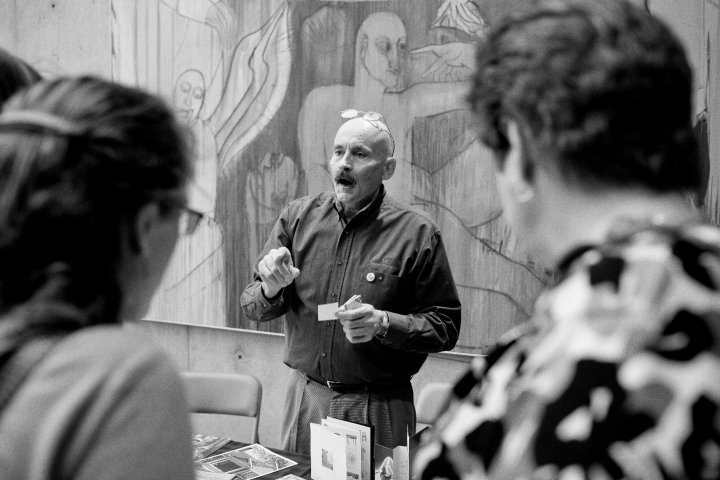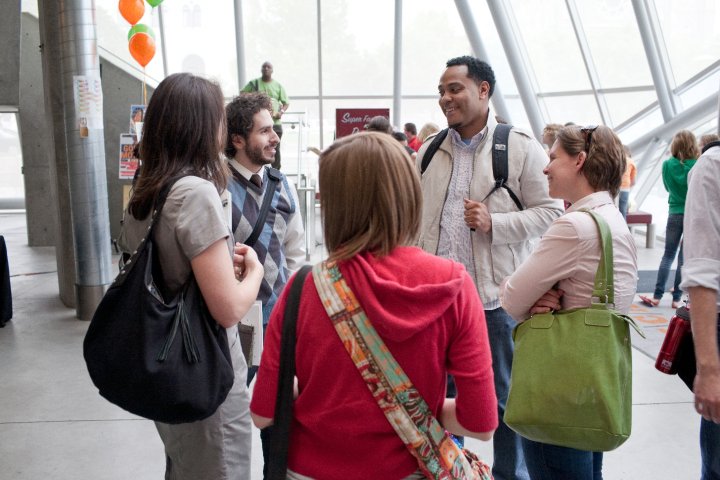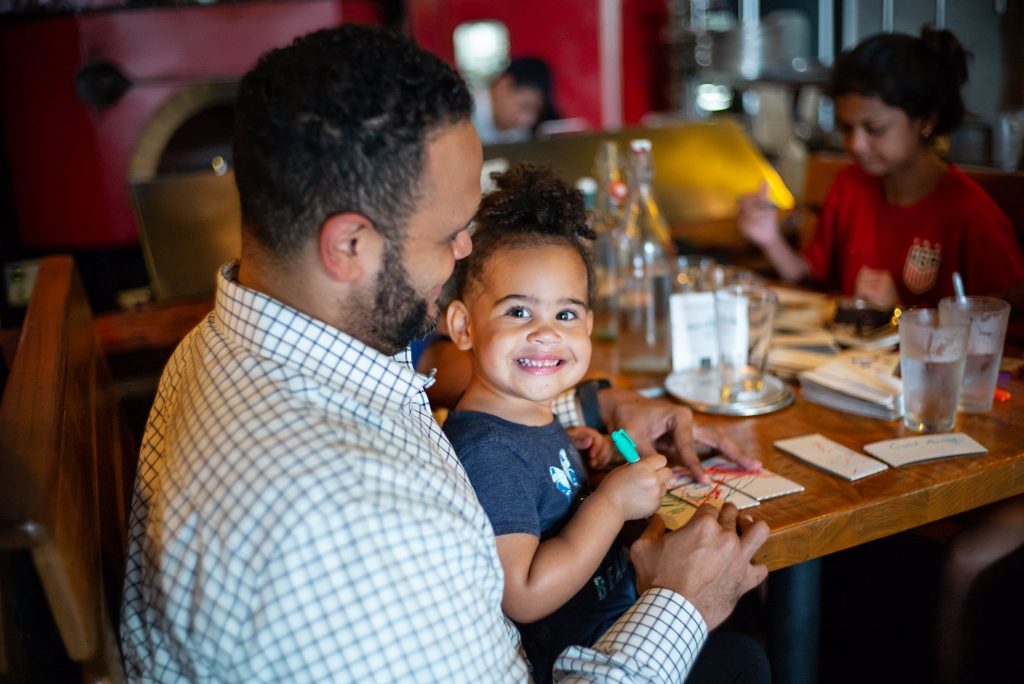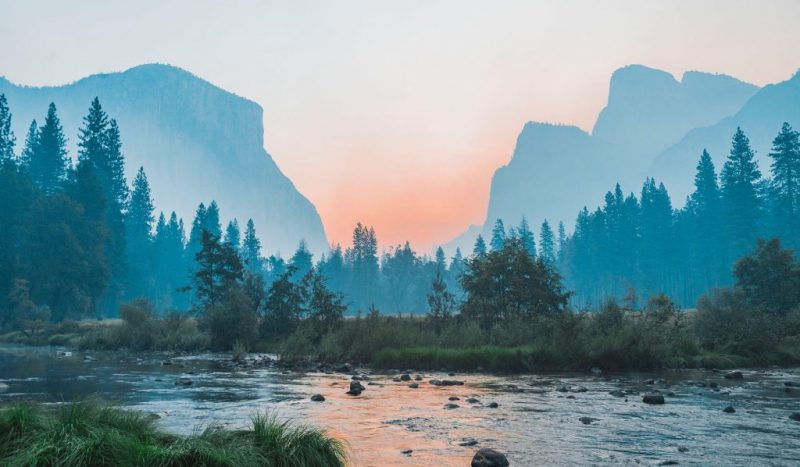Our community is at the heart of what we do. One of our main core values is that we rise by lifting others. Points North is a business made up of humans. We understand that it takes a village, and if we’re thriving, we want our communities to thrive too. We’re based in Baltimore, and we care about our community. Period.
How we define civic engagement is important. To us, civic engagement is any individual or group activity addressing issues of public concern. Civic engagement includes communities working together or individuals working alone to protect public values or make a change in a community. It’s the role you play in creating the world you want to live in.
There’s a great quote from Elizabeth Andrew that says “Volunteers do not necessarily have the time; they just have the heart.” Our motivation for civic engagement is that as we grow and thrive, we want our community to do the same. Also, we want to attract new talent to Point’s North who are excited about community engagement. We want our clients to understand that we are more than a company name, we are people. And people belong to communities. Civic engagement shows our integrity, adds to our story, and reinforces our values. We talk the talk, but we also walk the walk. Here are some of the biggest lessons from our time in this work.
Lesson One: Start Small
Big projects look like shiny objects. They shimmer in the sunlight, and we naturally gravitate towards them. But sometimes we don’t think about how much time, effort, and resources need to go into bigger projects, and how to make big projects sustainable over a long period of time. We learned this lesson with the A Day in the Life Baltimore Design Conference, 2010-2011.
We Bet on Baltimore and Design
This was Baltimore’s first design conference, and it happened at a time when events for creative professionals were few and far between. It was put together by a small group of talented creative professionals who were tired of seeing our city overlooked for major conference events. This is also the same year that I started what is now Points North, so as you can imagine, these were busy times, and I was naive. This conference definitely brought the creative community together, attracting talent and speakers from New York, Pennsylvania, DC, New Jersey, and South Carolina. But, we struggled with securing sponsors and funding, and grossly underestimated the amount of time it took to make an event like that happen. If I could go back and do that all over again, I would start small with maybe a series of lectures or talks, and space them out throughout the year.
Small projects can build into bigger projects over time. If we had started small, we could’ve established a reputation in the industry, and also created strong relationships with sponsors. We also could’ve better tested the market for what works and what doesn’t in Baltimore’s creative scene. Doing so could’ve allowed for a greater reach and more sustainable conference, if that was the route that made the most sense from our experience.
How to Start Small:
- Find ways to volunteer in your community first. This will help you understand the dynamics of your community and the needs that are already out there.
- Volunteering will also help you to make connections. You can likely find volunteer groups and opportunities through Meetup.com, and Facebook groups.
- If you have a small team that you work with or regular clients, ask them about the causes that matter to them. Use this as a way to figure out how you can make a difference.

Joe Wagner talks to some attendees of A Day in the Life Baltimore Design Conference.

A group of creative professionals and students talking at A Day in the Life Baltimore Design Conference.

Illiah Manger and Jess Watson, two of the organizers for A Day in the Life Baltimore Design Conference, posing together in a photo booth. We were so young!
Lesson Two: Start with your Why
Having your community projects succeed takes more than just circumstances happening on the outside. They also have a lot to do with what’s happening behind the scenes on the side of your business. We strongly believe that your commitment to civic engagement and volunteer work should also be a foundational part of your business. This means that it is interwoven into the fabric of your company. You should have it as part of your vision, values, and it should be a part of your story.
Why This is Important:
- First, establish your vision and values. Then ensure they are echoed tastefully in how you represent your business. This means on your website, in your marketing materials, and also as part of employee onboarding. This is a competitive advantage that can help to separate you from the sea of other companies that do what you do.
- Second, attract like-minded talent to your company. As you hire someone new to your team, it needs to be not just a talent fit, but also a cultural fit. Ultimately, you want people whose personal values can align with your business values and the vision your company has for a better world.
- Connecting your community work to the company’s vision and values may help to uncover unique community engagement opportunities. At Points North, we believe good design can change the world. So we cultivate experiences that bring people, passions, and causes together. In terms of our work, that looks like brands, websites, and stories. But in terms of our community engagement, that looks like Have A Nice Day Project. For this project, people meet quarterly to write positive messages on blank coffee cup sleeves, and then those sleeves are donated to locally-owned cafés around our city. You’d be amazed at what a set of permanent markers and good company can do.
Lesson Three: Toot Your Own Horn
Just because you build it doesn’t mean it will come. This is going to sound like it goes against your nature, but hear us out. Large corporations have PR teams whose sole purpose is to maintain their image, and a lot of that has to do with the stories they tell. These same companies have commercials to talk about how much they’ve given. They have full pages on their website that highlight their impact work. There’s a way to tastefully work your community work into the narrative of your business.
Crafting Your Story:
- Look up the reporters who cover similar stories in your local news outlets, and then write a press release for the work you’re doing. Do this with the long game in mind, as you may not see immediate results. Eventually, over time, you should get some traction. When folks ask how we got into the newspaper or on television, it’s usually because we sent the press release or responded to a request for news tips. When someone asks how we got the mayor or our local representatives to attend our event, it’s because we invited them weeks before the event was scheduled to happen.
- Hire or partner with a local photographer. We work with John Waire, from theWaireHouse. I cannot express in enough words how good it feels to have professional photos that truly capture the energy and excitement around our community work. And John has a true gift for being able to truly capture these candid moments where someone’s spirit really shines through. As news outlets reach out, we direct them to our stunning photography.
- Additionally, we used Squarespace to build an easy website that could house the story, history, and impact of Have A Nice Day Project. When we are contacted for sponsor and partner opportunities, we can easily share the website where people can immediately see why this project matters to Baltimore, and how they can stand behind the initiative.
- When you or your team are doing work on your community initiatives, talk about it on social media. You can also write a blog post about it, and give it a special hashtag. These little acts help to create a history for your project that will build over time. Check out our hashtag #bmorenice for an example of this.

The website we built using the no-code platform Squarespace, for Have A Nice Day Project.

One of many beautiful moments captured by local photographer John Waire, of TheWaireHouse. Seriously, check him out. He does great work.
Lesson Four: Play the Long Game
We live in a time when everyone expects instant results, but the world doesn’t exactly work that way. When you’re thinking about community work, it’s important to play the long game. Volunteering to help plant trees for one afternoon a month may not seem much when you’re just getting started. But in a few years, you’ll have a forest. That same mentality applies. Find work where you can create an impact over time.
Long-Term Impact Work:
- Hosting a Volunteer Day at work. If you have a team that isn’t local, you can encourage them to use this day to find volunteer activities in their own communities. Have a quick brainstorming session about it in one of your team meetings.
- Starting a Mentor/Intern program through your company. This is something you can test out on a small level and grow over time.
- Your company can do charitable giving or matching on a monthly basis. You can poll your team to find out what causes are important to them, and rotate a handful of organizations to give to over time. Or, you can work together to select a handful of charities that align with your vision and values, and work to create a relationship with them over the time.
- Tying percentage of revenue to community initiatives. Do this over a month to pilot it before committing to something long-term.
In Conclusion:
As you can see, we have a lot to say about this topic. But after nearly 12 years of business, we have a lot of experience too. Stay tuned in the coming weeks for part two on the lessons we’ve learned from 11 years in community engagement. Also, learn more about our impact work here.


